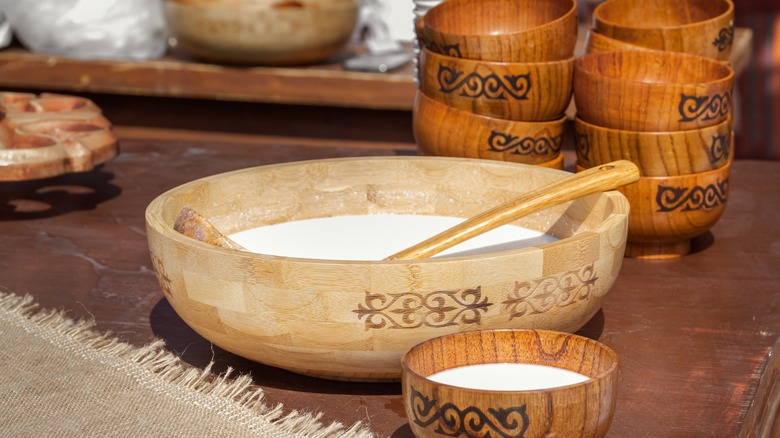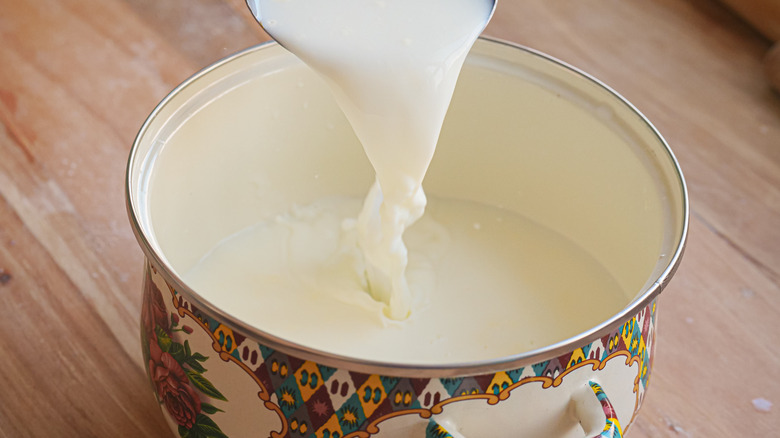Camel Milk Gains Steam As Consumers Steer Away From Cow's Milk
When you hear the words "alternative milk," varieties like oat milk or cashew milk probably come to mind. But, in another of a long chain of surprising events in 2023, camel milk is having a moment right now (yes, really).
According to a new report from market research firm Fact.MR., the camel milk industry is currently valued at $1.34 billion and is expected to keep gaining popularity, enjoying a 4.1% compound annual growth rate through 2032, via Food Dive. The growth is spurred by the increasing popularity of vegan diets and consumer intolerances to animal proteins for chronic health reasons. Camel milk also doesn't contain beta-lactoglobulin, a naturally occurring compound found in cow milk that upsets dairy-sensitive stomachs.
The motivations are similar to why foodies have embraced plant milk, an industry that is expected to see a CAGR of 9.9% through 2033, even higher than its CAGR of 7.9% between 2018 and 2022. By 2033, plant milk is anticipated to reach a global market valuation of $47.2 billion. Camel milk could be climbing the ranks alongside the more established wave of alternative plant milks. Conversely, the USDA recently dropped its 2023-2024 dairy milk production forecast by half a billion pounds.
Why camel milk? The taste is super similar to cow milk, plus it's nutrient-dense and loaded with probiotics that promote digestive system health. This is a distinct advantage over plant milks, which are across the board significantly lower in calcium, vitamin D, and protein compared to cow's milk.
Easy on the belly, but not on the wallet
Farms from San Francisco to Indiana are producing camel milk, and as of February 2023, camel milk sales are also up in Australia as foodies down under are developing a taste for the alternative dairy. Many different brands have emerged in the American market, including Good Earth Dairy, Drome Dairy Naturals, Camel Culture, Camelot Dairy, and more. There's even an official Camel Milk Association based in Michigan.
Still, while camel milk may be a functional ingredient, it remains a niche nutrition product, and for now, it comes with a price tag to match. The cost of camel milk is 700% to 800% greater than that of cow milk, which poses a major obstacle to consumers. Back in 2014, Desert Farms was already distributing the product to 40 Whole Foods Market locations across California at $18 per pint. Many companies have begun marketing to higher-income shoppers.
In addition to the steep price point, camel milk faces another hurdle to becoming a high-volume product: Camels simply don't produce as much milk output as cows, cranking out about 1 gallon per day versus cows' 13. Plus, camels don't start producing collectible milk until they're about a month old, compared to three days old with cows. But, camel milk currently fetches $26 per liter compared to cow's $1. Small-scale farming operations also ensure higher quality control and by-volume revenue for farmers. Time will tell whether the unlikely alternative dairy cements its position as a grocery mainstay rather than a specialty treat.

